
If you’ve ever lived without a dishwasher, you know what a time-saver that appliance can be. But it’s not always as simple as load dishes, add soap, push button.
If you mess up loading and running your dishwasher — and it can be done — you may just end up having to run another load, which is a waste of time and water.
The next time you need to load and run your dishwasher, give a thought to these common dishwasher mistakes.
1. Pre-rinsing

Your parents may have ordered you to pre-rinse dishes before putting them in the dishwasher. But Chris Doscher, a representative from the Association of Home Appliance Manufacturers, tells Money Talks News there is generally no need to pre-rinse dishes.
Pre-rinsing dishes can use up to 20 gallons of water — and this is before the dishwasher is ever turned on. And it’s not necessary — modern dishwashers can deal with the mess. It’s literally their only job.
2. Forgetting to scrape
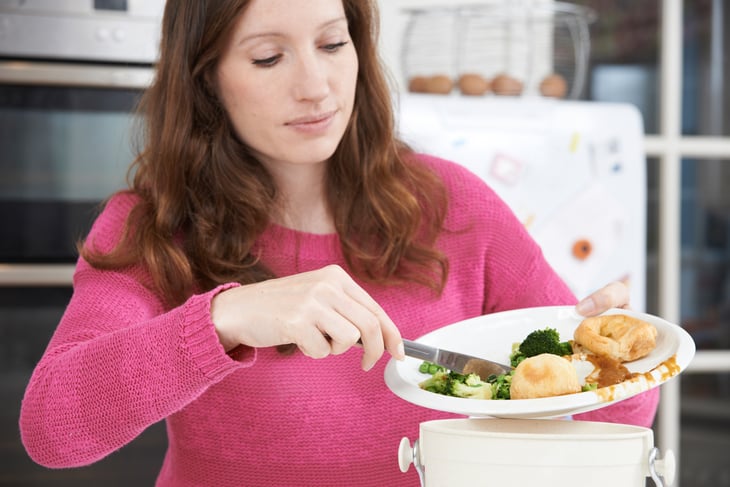
Don’t pre-rinse, but do scrape. You don’t need water for this — just use a fork and slide any leftover food off your plates and into your trash or compost bin. (If you feel tempted to rinse afterward, see tip No. 1.) By scraping but skipping the pre-rinse, “you’ll save water and your dishes will be just as clean,” Doscher says.
3. Disorganized loading
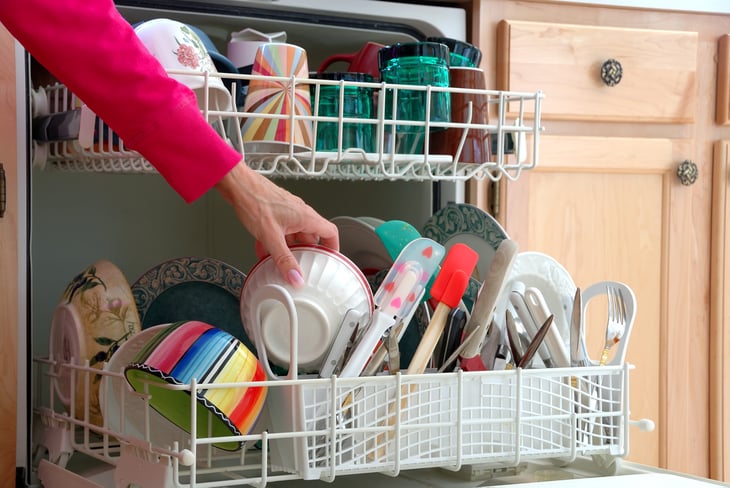
“Incorrect loading can interfere with cleaning,” Doscher says.
He recommends putting lighter items, such as bowls, on the top rack, and heavier ones, like pots and pans, on the bottom. Bowls, of course, should be angled so as not to collect water during the cycle.
Some might worry that placing pots and pans on the bottom rack will block water from reaching the top rack. But Doscher notes that many dishwashers have more than one spray arm: one below the top rack, and one at the bottom of the appliance. If you’re unsure whether you have this type of dishwasher, you can also place large cookware on the bottom rack but at an angle.
If your concern is that pots and pans on the bottom rack might obstruct dishwasher spray arms, try tapping the arms before starting your dishwasher. If they spin freely, they’re not obstructed.
4. Placing drinking glasses over rack tines

It’s tempting to hook your drinking glasses over the tines — the slender, projecting points of a dishwasher rack. But Doscher says to avoid this. Put glasses on the top rack, between — not over — the rows of rack tines.
“Putting them over the tines can sometimes result in spotting or stress on the glass,” Doscher says.
5. Sorting forks with forks, spoons with spoons
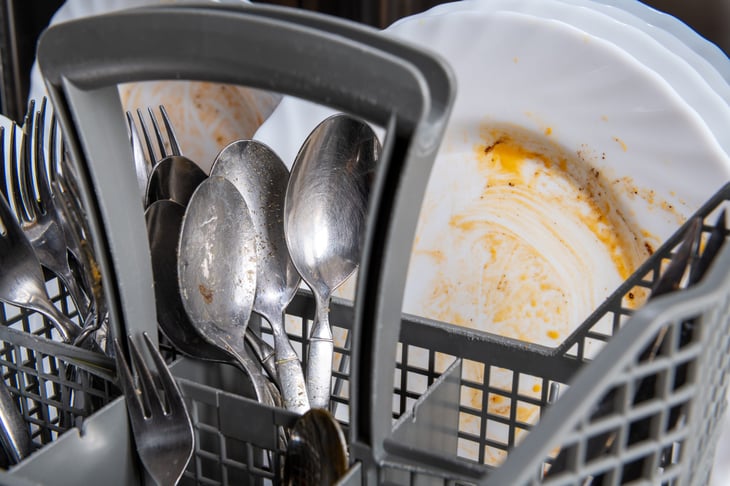
Silverware should be placed in the dishwasher’s flatware basket, of course. But it’s easy to get into the habit of placing all spoons together, all forks together, and so on, so when they’re clean, you can just grab a big handful and put them all away together. Doscher advises against this.
“Don’t put all of the silverware of the same type in the same areas of the basket,” he says. “That’s particularly true for spoons. If spoons are too close, they can block one another from getting clean.”
6. Putting knives in blade-up
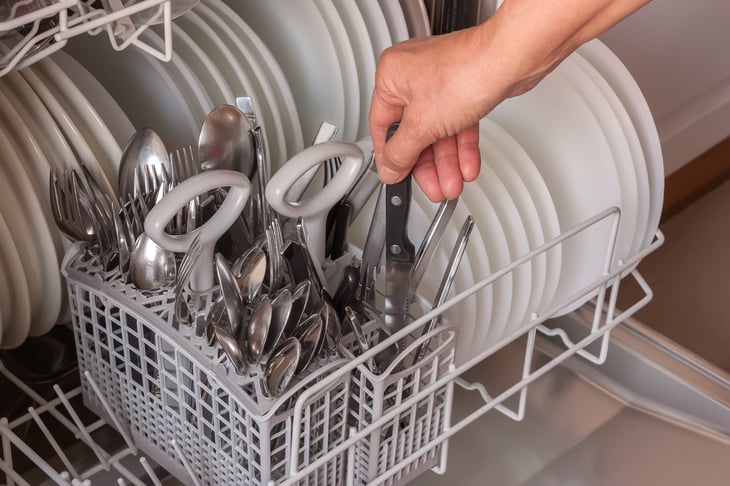
Be sure to put knives in the basket with the blade down, so whoever unloads the dishes doesn’t reach in and cut himself.
7. Overloading
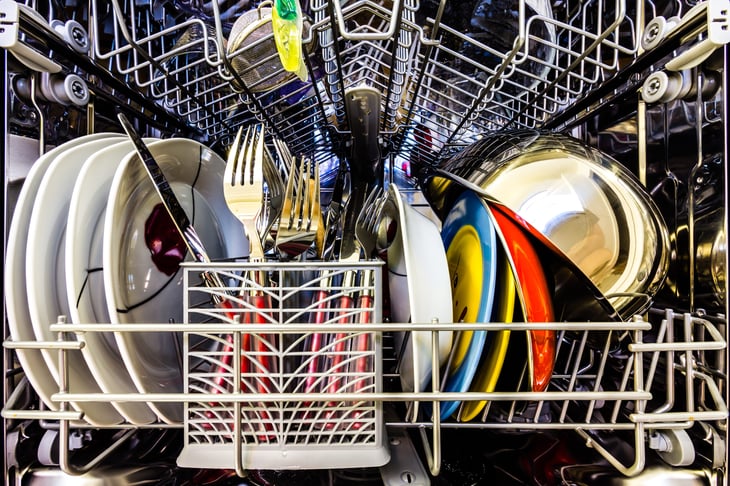
Thanksgiving dinner is over, and you really want to shove all the dirty dishes in the dishwasher and reclaim some counter space. Resist this, and don’t stuff the dishwasher too full.
“Overloading is tempting, but it isn’t a good idea,” Doscher says. “Extra dishes can block jets of water or even stop spray arms from spinning, and you may find you have to do the dishes again afterward. Put the dishes that can’t fit aside for the next cycle.”
8. Never cleaning the filter
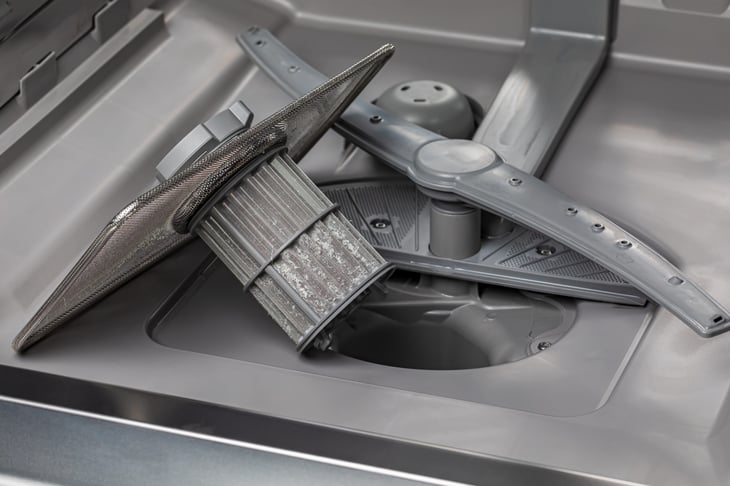
Your dishwasher likely has a filter located below the bottom dish rack. That filter can get jammed up with pieces of food, and Doscher warns this may affect your dishwasher’s performance and might cause unwanted odor.
He recommends cleaning the filter every week or two or checking your dishwasher manual for specific guidance for your dishwasher model.
9. Not adjusting your dishwasher cycle

Your dishwasher may offer a number of cycle choices. Read your manual — likely available online somewhere if you’ve thrown out the paper version — and get to know your options.
Doscher notes that some dishwashers offer a half-rack or half-load feature that’s made for smaller loads of dishes. If you tend to run your dishwasher when it’s only partially full, adjust your cycle to this choice, if you have it.




Add a Comment
Our Policy: We welcome relevant and respectful comments in order to foster healthy and informative discussions. All other comments may be removed. Comments with links are automatically held for moderation.